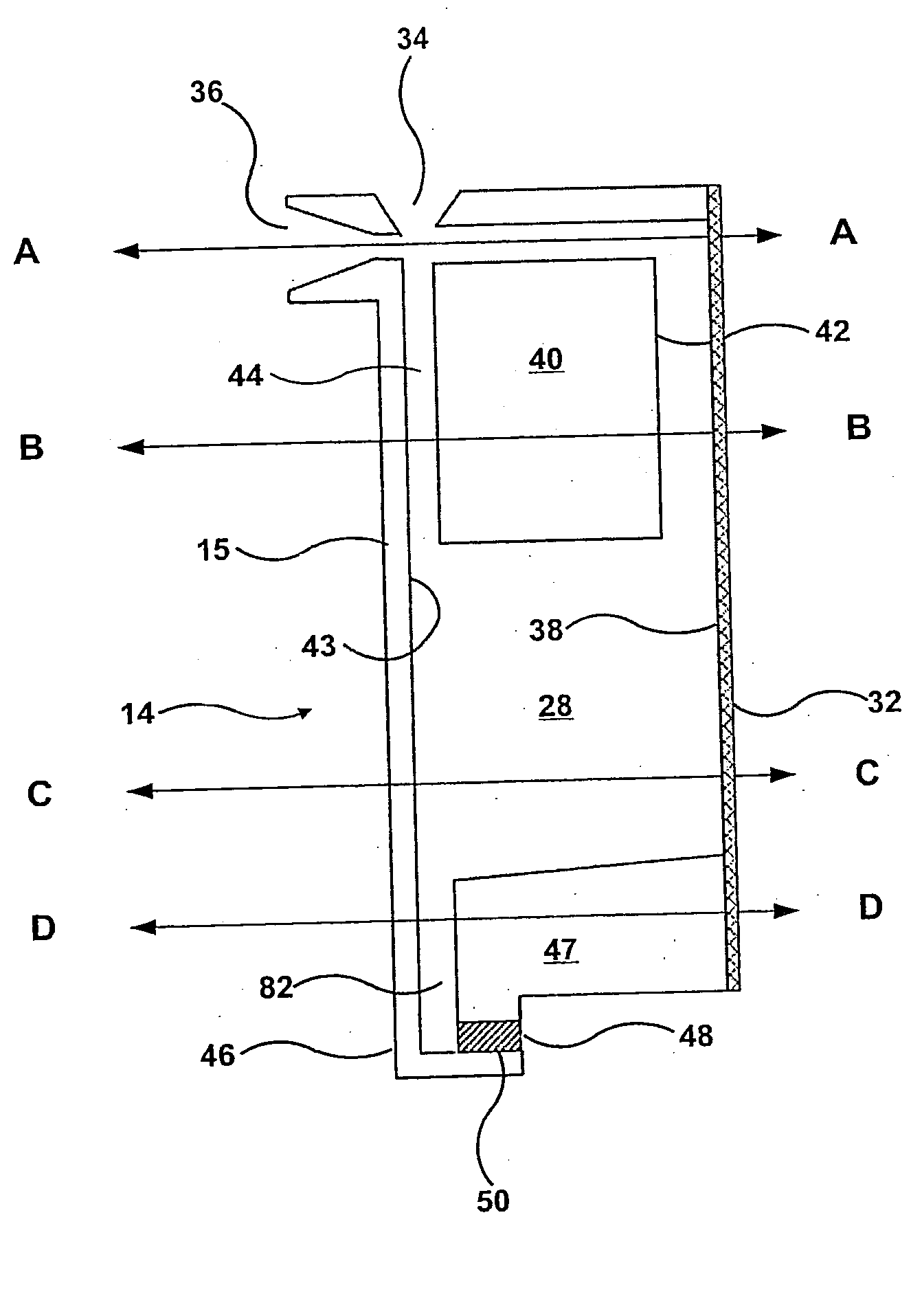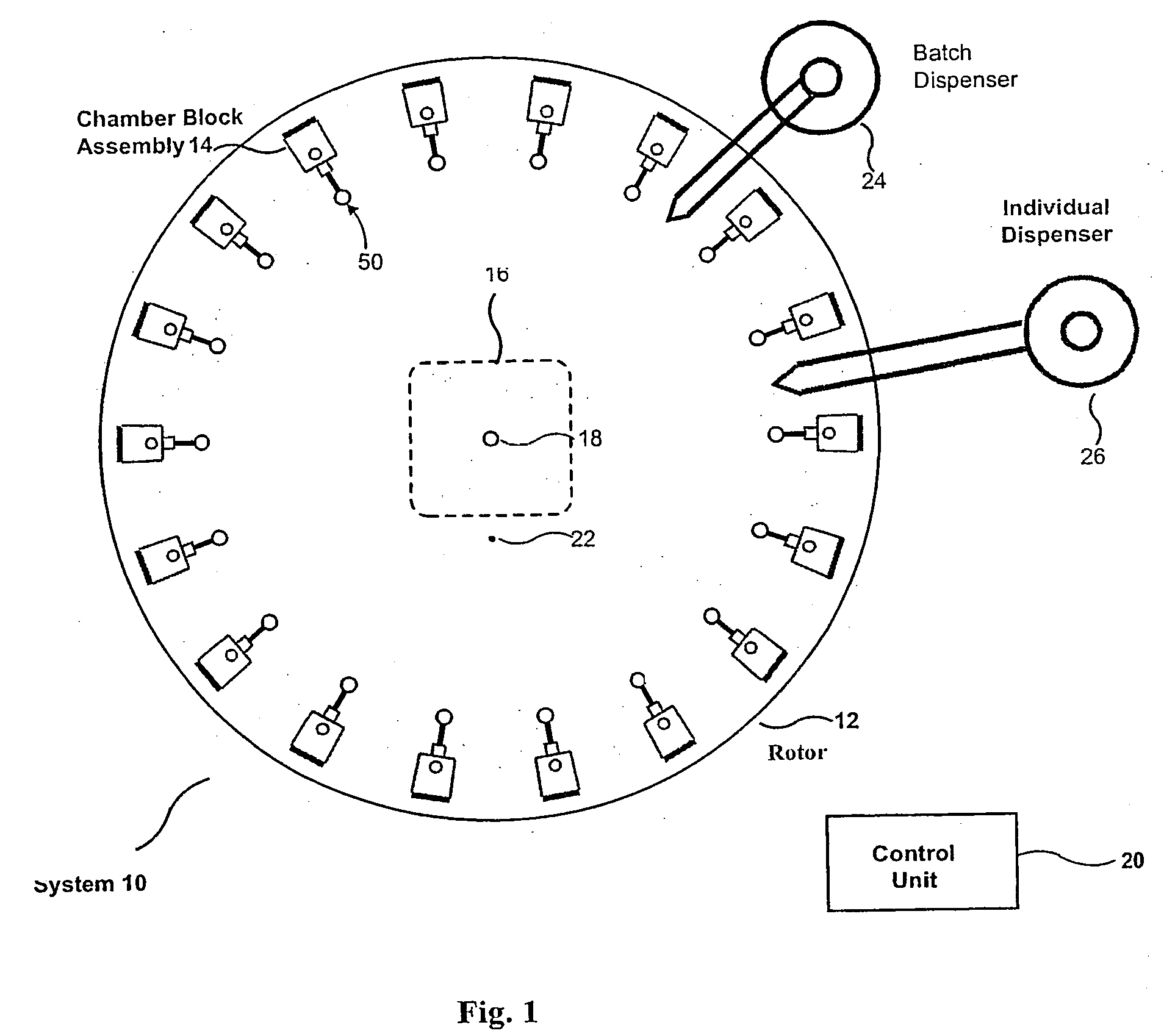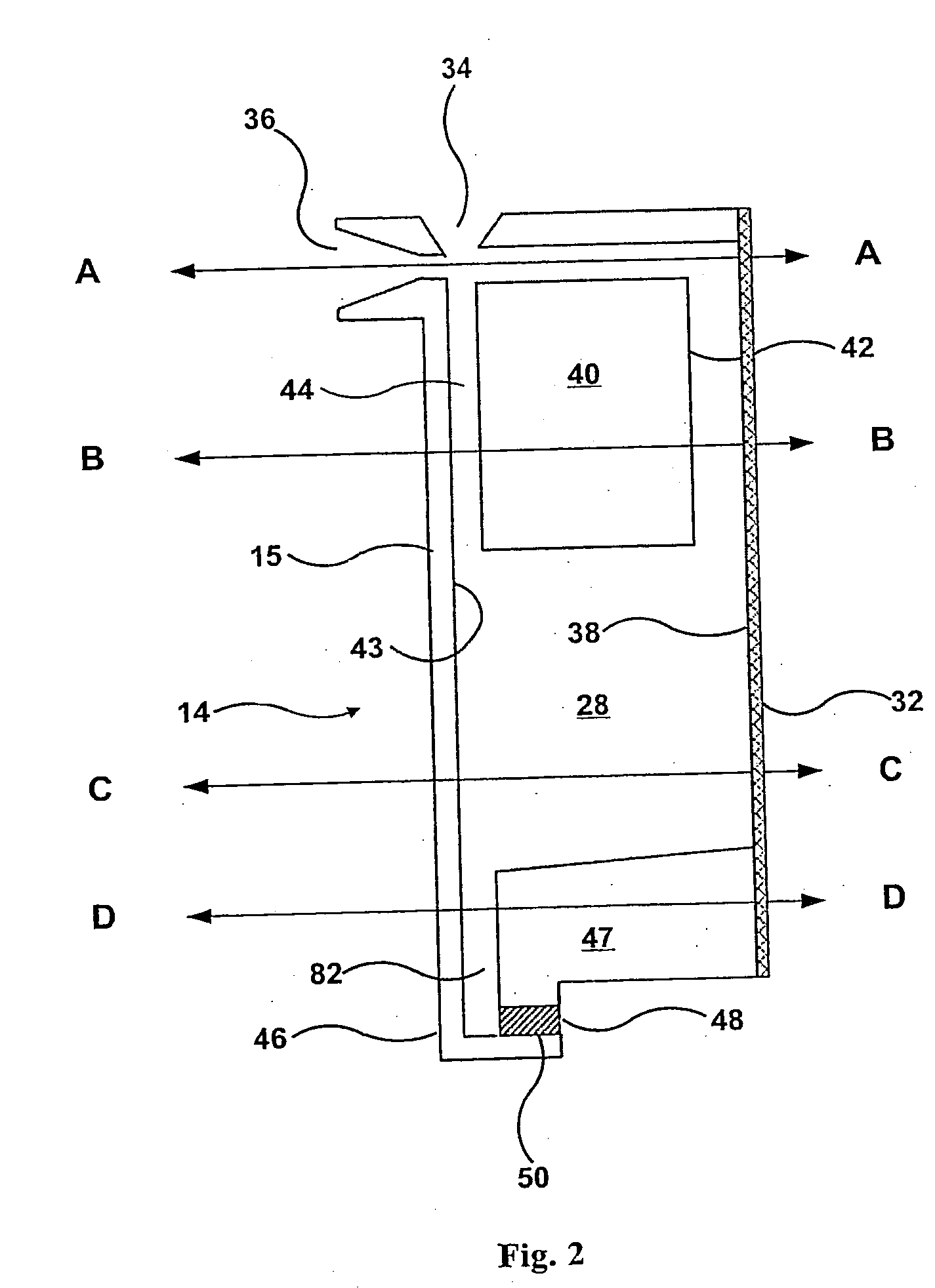Centrifugal cytology system, chamber block and method for the preparation of treated monolayers of sample material
a cytology system and chamber block technology, applied in the field of centrifugal cytology system, chamber block and method for the preparation of treated monolayers of sample material, can solve the problems of inadequate sampling of fixed smear material, poor adhesion, and cell loss off the receiving surface member, so as to minimize the risk of cross-contamination, minimize the cost of preparation, and minimize cell loss
- Summary
- Abstract
- Description
- Claims
- Application Information
AI Technical Summary
Benefits of technology
Problems solved by technology
Method used
Image
Examples
Embodiment Construction
[0136] Referring to FIG. 1, the centrifugal cytology system is identified generally by numeral 10. The centrifugal cytology system includes a rotor 12 that holds a plurality of individual, removable chamber block assemblies 14, arranged in the form of an array at the circumference of rotor 12 and is driven by a motor 16 (shown in dashed lines), of which the shaft 18 is shown. The rotor 12 is precisely indexed by the motor 16 and a control unit 20. The combination of the motor 16 and a control unit 20 provide both precise indexing and a rotational speed to develop 50×gravity or more. In the preferred embodiment, the motor 16 is equipped with an optical encoder or other means that will provide position information. The motor 16 can be a servomotor or in an alternative embodiment a multipole stepper motor, with or without micro-stepping.
[0137] One or more cylindrical holes 22 provides for drainage of waste fluids from the bottom of the rotor. The same or different treating agents can ...
PUM
| Property | Measurement | Unit |
|---|---|---|
| Time | aaaaa | aaaaa |
| Centrifugal force | aaaaa | aaaaa |
| Flow rate | aaaaa | aaaaa |
Abstract
Description
Claims
Application Information
 Login to View More
Login to View More - R&D
- Intellectual Property
- Life Sciences
- Materials
- Tech Scout
- Unparalleled Data Quality
- Higher Quality Content
- 60% Fewer Hallucinations
Browse by: Latest US Patents, China's latest patents, Technical Efficacy Thesaurus, Application Domain, Technology Topic, Popular Technical Reports.
© 2025 PatSnap. All rights reserved.Legal|Privacy policy|Modern Slavery Act Transparency Statement|Sitemap|About US| Contact US: help@patsnap.com



